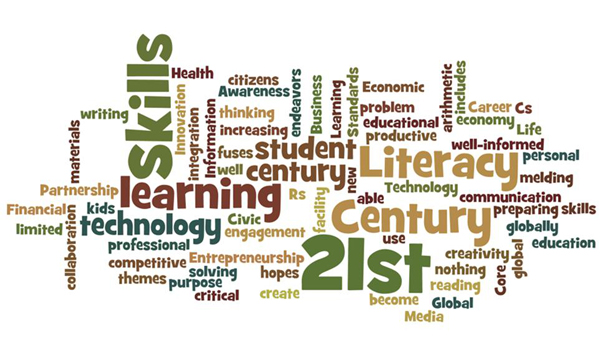Debate about the purpose of education seems to be unending.
Should young people become educated to get prepared to enter the workforce, or should the purpose of education be focused more on social, academic, cultural and intellectual development so that students can grow up to be engaged citizens?
With each new workforce development or economic competitiveness demand on our K-12 schools, there has been push-back from those who want greater emphasis on a broader view of education.
But it doesn’t have to be either-or. Education should prepare young people for life, work and citizenship.
Knowledge of the natural, engineered environments and how people live in the world is critical to all three purposes of education. Critical thinking, creativity, interpersonal skills and a sense of social responsibility all affect success in life, work and citizenship. For example, unhappy personal relationships often spill over into the workplace, while a stressful workplace or unemployment negatively impacts family life. Uninformed disengaged citizens lead to poor policy choices that impact life, work and citizenship. To paraphrase the verse in the old song, “You can’t have one without the others.”
This multiple-purpose perspective has practical implications for both day-to-day instruction as well as education policy.
What classrooms features support education for life, work and citizenship?
The key is to identify the learning behaviors in which students should be engaged. The National Research Council’s Framework for K-12 Science Education provides some good examples. The framework describes the practices that scientists and engineers utilize to build new knowledge and designs, but also the student engagement that leads to learning. To be clear, the framework starts from the premise that science is a means to develop explanations about how the natural world works, and engineering is a means to develop solutions to human problems. Both are intended to improve our lives– a strong motivator for all learning. With a little tweaking, the practices are surprisingly applicable to various school subjects and as vehicles to address our multiple purposes.
(1) Ask questions about phenomenon (causes of cancer, climate change) and define problems that need to be solved (designing cancer treatment drugs, low-impact energy generation). Asking productive questions and defining meaningful problems isn’t just an academic skill. It is an important disposition across life, work and citizenship.
(2) Develop and use models. Models represent relevant testable features of scientific explanations or design solutions. One key modeling idea, applicable to life, work and citizenship is that most problems worth contemplating are complex and that seeking to understand that complexity is a better approach than a rush to simplicity. Another important idea is that models, or our initial ideas, should be subject to systematic investigation. Knowing whether or not those models comport with reality is critical, lest we make poor uninformed choices with unintended consequences.
(3) Plan and carry out investigations. The goals of investigations are to test, refine or replace existing or hypothetical explanations or design solutions. Developing students’ abilities to examine data systematically, is yet another multipurpose education outcome. Taught well, students learn three basic premises: The questions asked frame what data is available for inquiry. The questions not asked may be just as important. In addition, in an active classroom with plenty of time for discussion, students learn that different people look at the same data and reach different interpretations. Not a bad life skill!
(4) Analyze and interpret data and (5) Use mathematics and computational thinking. Data does not speak for itself. Investigations to test explanations or designs yield data that must be interpreted. In classrooms organized around these eight practices, students learn that answers to important questions are not given. Instead, answers come from examining whether, when, under what circumstances, and how things work in the world. Students learn to use both traditional and modern interpretative tools. Especially in examining complex systems or designing complex solutions, mathematical representation and computational analysis are critical. Students learn to see mathematics not as procedures to be memorized, but as tools for making sense of the world– yet another multipurpose skill.
(6) Constructing explanations and designing solutions and (7) Engage in argument from evidence. The framework says:
Think about the power of depersonalizing arguments and making them about evidence. That sure could improve addressing the unavoidable conflicts that are part of the fabric of life, work and citizenship.
(8) Obtain, evaluate, and communicate information. The practices of science and engineering are forward-looking, knowledge- and solution-directed and always seeking improvement. As such, there is a premium on communicating with others. As a result, classrooms that engage in these practices are characterized by collaboration, reflectiveness and openness to alternative ideas. Once again, great skills to nourish for life, work and citizenship.
